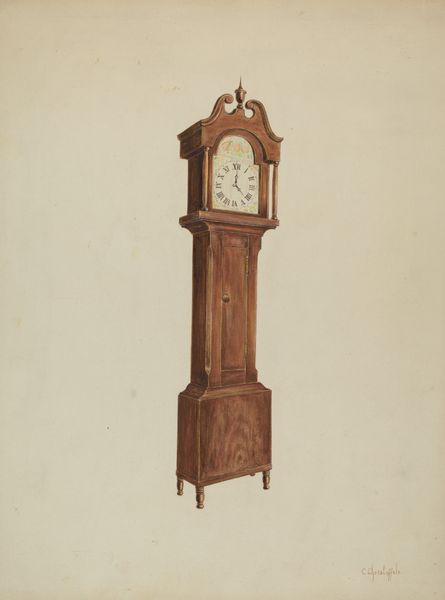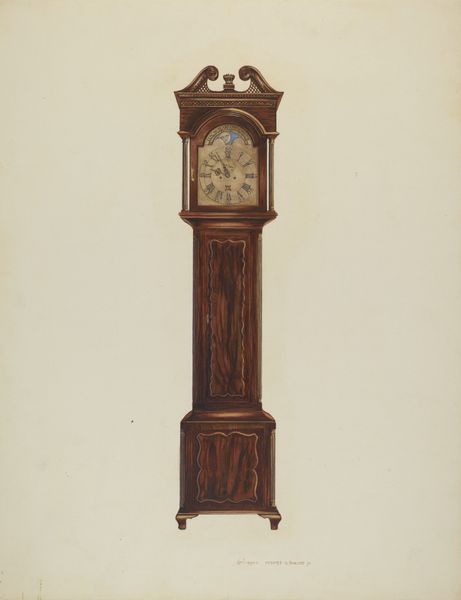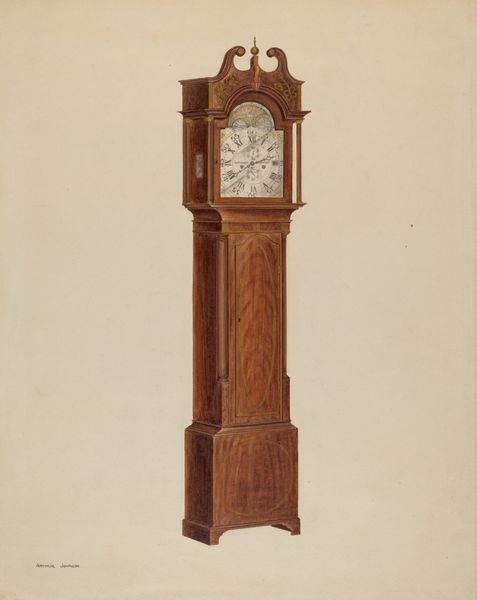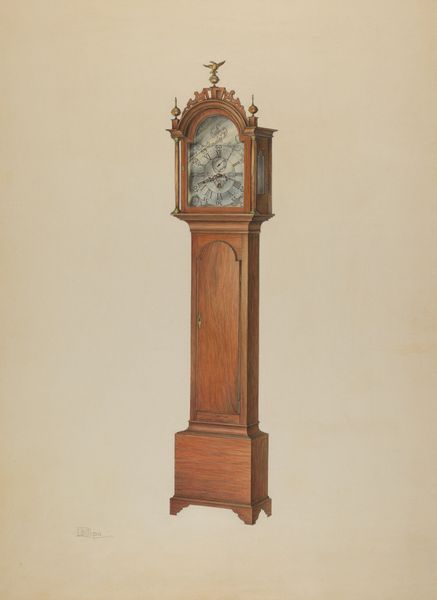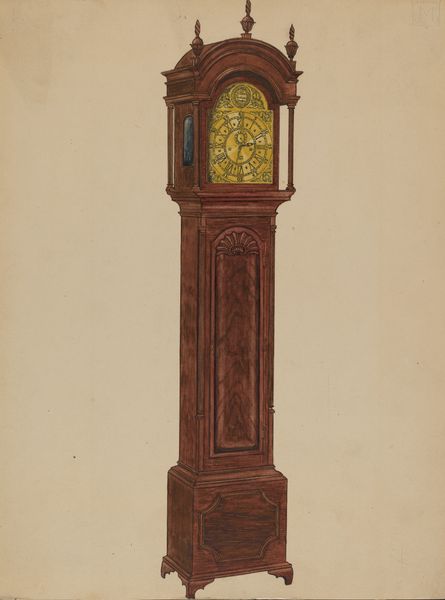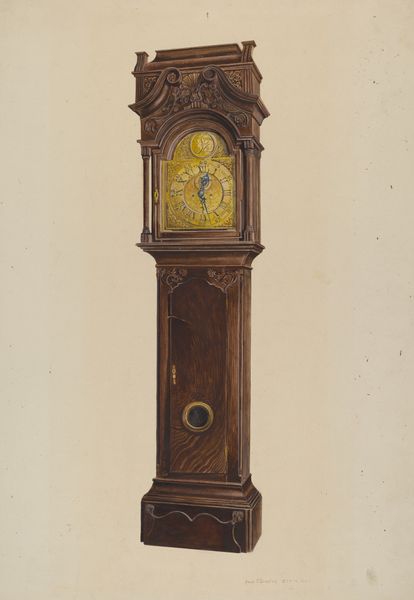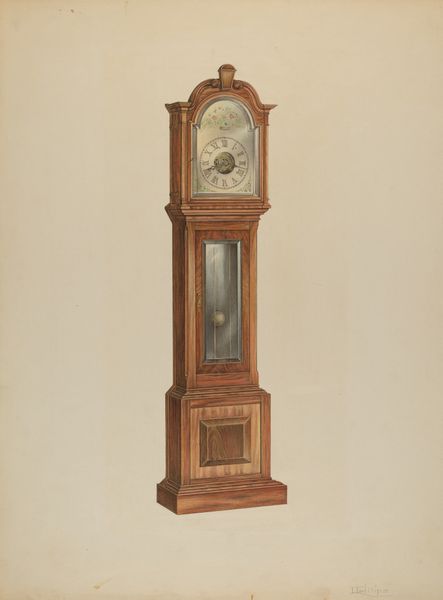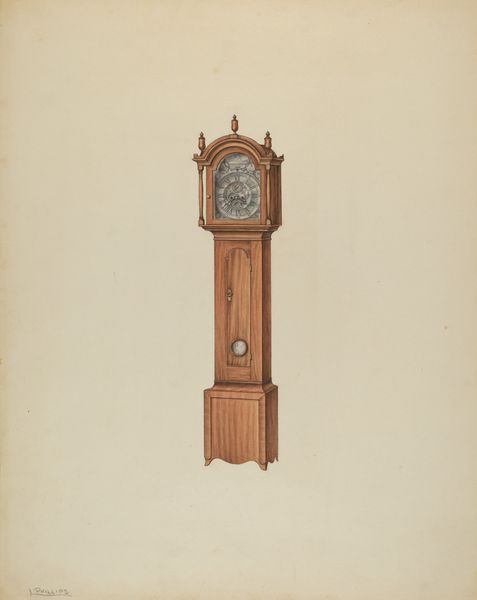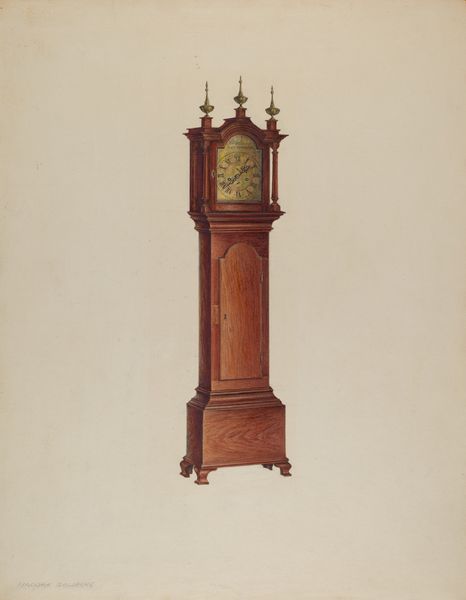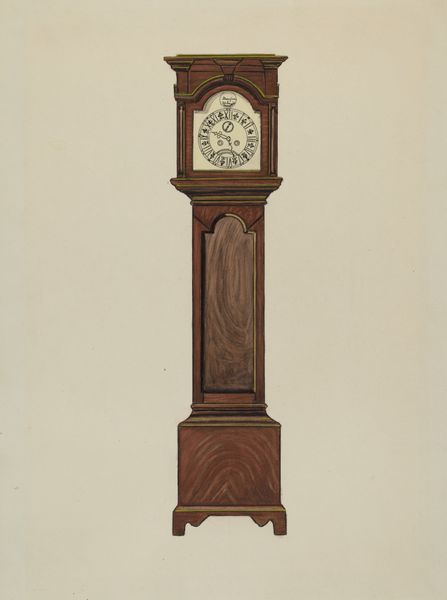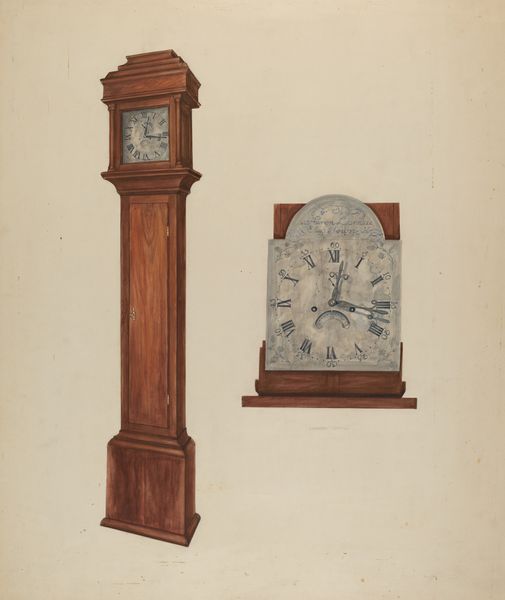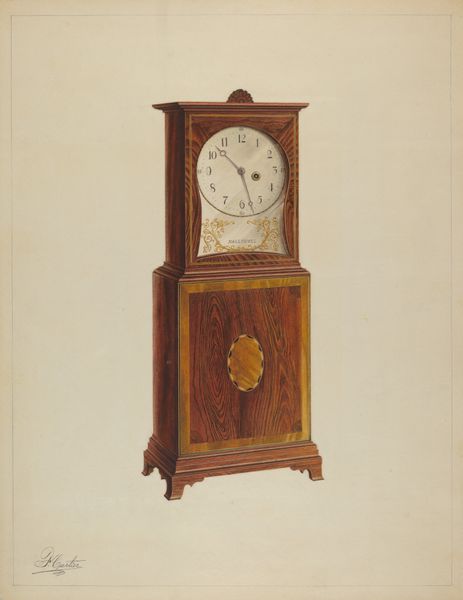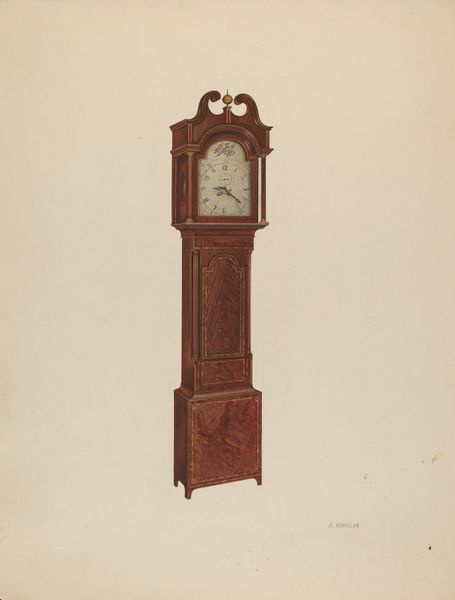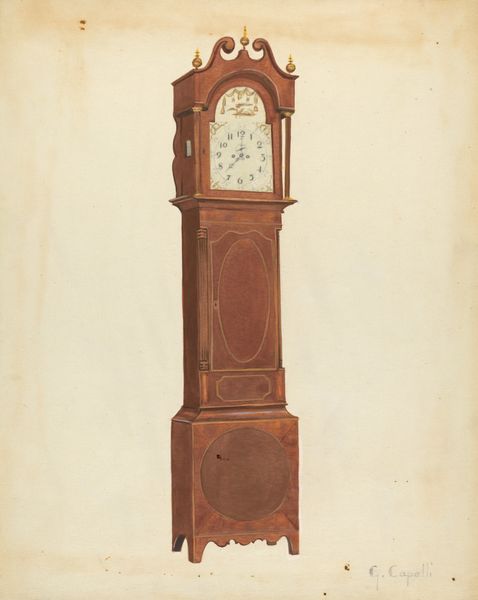
drawing, watercolor
#
drawing
#
watercolor
#
watercolour illustration
#
decorative-art
#
modernism
#
realism
Dimensions: overall: 30.3 x 22.5 cm (11 15/16 x 8 7/8 in.) Original IAD Object: 43 1/4"high; 10 1/8"wide; 5 3/8"deep
Copyright: National Gallery of Art: CC0 1.0
Curator: Ulrich Fischer's watercolor and drawing "Shelf Clock", circa 1937, presents us with a captivating representation. It feels precise, almost reverent. Editor: It's beautiful but sterile, isn't it? I immediately focus on the draftsmanship behind the rendering. Is that faux-wood grain? And it appears machine made or crafted, without revealing the specific making process. It seems more a proposal for consumption. Curator: I see your point about consumption, yet the level of detail directs my eyes to its pure geometric forms—the elegant elongated rectangle, the circles, the carefully considered symmetry. Editor: Symmetry indeed. I keep wondering what kinds of wood would realistically lend itself to the depicted coloring and texture. The diamond shapes draw your eye, creating movement from the dark against light surfaces. Also, the repetitive line-work along the edges. Curator: Yes! This line emphasizes the constructed reality. A key stylistic move. Do you see it as critiquing industrial modes, or reflecting its aesthetic? It feels as though it wants us to appreciate form. Editor: I am torn. If mass-produced, then questions of affordability and accessibility become key, no? Is it a drawing created in conversation with the history of cabinetry, with all the social dimensions of labor embedded therein? That seems most important. Curator: But within its flat presentation and graphic elegance, doesn't it offer a window onto pure shapes and geometries, offering an ideal of streamlined functionalism? Editor: And masking labor behind it all. But as a design concept alone, its value hinges on how it reshapes materiality, doesn't it? This forces the observer to acknowledge the social process of producing design in art. Curator: I grant you it’s certainly tied to social dimensions. I'm captivated by its internal construction of ideal form. Editor: To reduce the materiality of object hood to simple shapes. Perhaps. But that could only ever be reductive in the long run. Thanks. Curator: Agreed. It provides so many viewpoints for dialogue.
Comments
No comments
Be the first to comment and join the conversation on the ultimate creative platform.
